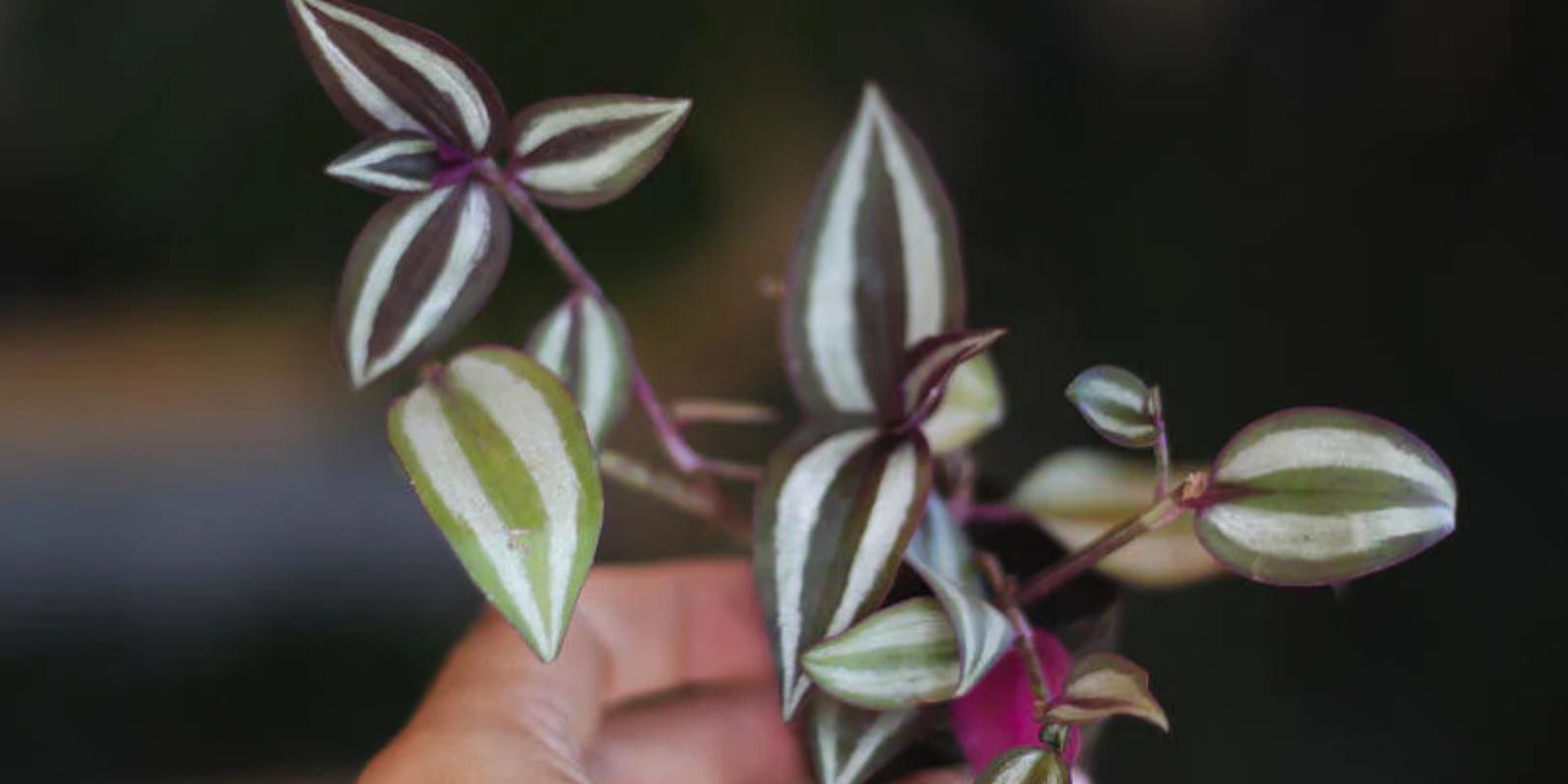Tradescantia zebrina, popularly known as the baby zebra plant, is a delightful addition to any indoor garden. Its striped, purple-green leaves make it a showstopper, while its low-maintenance needs make it a favorite among both novice and expert plant lovers. Whether you’re looking to propagate, grow, or maintain this fast-growing beauty, this guide will cover all the steps you need to nurture a thriving Tradescantia zebrina.
What Makes Tradescantia Zebrina Special?
The baby zebra plant is renowned for its resilience and adaptability. It thrives in various conditions, grows quickly, and is incredibly forgiving, even for those with less-than-green thumbs. As it grows, its long, trailing stems make it perfect for hanging baskets, pots, or even as ground cover in warm climates. Its ability to propagate easily from cuttings means you can multiply your plant collection in no time.
How to Grow Tradescantia Zebrina
1. Choose the Right Cutting
Propagating Tradescantia zebrina from a cutting is one of the simplest ways to grow this plant. Look for a healthy stem with vibrant leaves. Ensure the cutting has at least three to five nodes (the part where the leaf attaches to the stem), as this is where roots will develop.
- Use sharp, clean scissors to snip just below a node.
- Remove the leaves closest to the base to expose at least one node for planting.
2. Propagation Methods: Soil vs. Water
You can propagate the plant in two ways—both work equally well depending on your preference.
Soil Propagation
- Fill a small pot with well-draining potting soil, preferably a mix that includes perlite or coco peat for optimal aeration.
- Plant the cutting with the node buried slightly in the soil.
- Water lightly, ensuring the soil is moist but not soggy.
Water Propagation
- Place the cutting in a jar of clean water, submerging the node but keeping the leaves above the waterline.
- Change the water every 3-5 days to prevent stagnation.
- Once roots are about 1-2 inches long (typically within a week or two), transfer the cutting to soil.
Planting and Growing Conditions
1. The Right Pot
Choose a pot with drainage holes to prevent waterlogging, which can lead to root rot. A shallow, wide pot is ideal for Tradescantia zebrina, as its roots don’t grow deeply.
2. Light Needs
The baby zebra plant thrives in bright, indirect sunlight. While it can tolerate low light, its striking purple and green hues are most vibrant when exposed to ample light. Avoid placing it in direct sunlight, as this can scorch the leaves.
3. Watering
Tradescantia zebrina prefers a balance between slightly moist and dry soil.
- Water the plant when the top inch of soil feels dry to the touch.
- Overwatering can cause root rot, so ensure excess water drains from the pot.
4. Temperature and Humidity
The plant thrives in temperatures between 60°F and 80°F (15°C – 27°C). It loves humidity, making it perfect for bathrooms or kitchens. If the air in your home is dry, mist the plant occasionally or place a tray of water nearby to increase humidity.
Caring for Tradescantia Zebrina
1. Pruning
Tradescantia zebrina grows quickly, so regular pruning is essential to maintain its shape and encourage bushier growth.
- Use clean scissors to trim back leggy stems and promote new shoots.
- The cuttings can be propagated, so nothing goes to waste!
2. Fertilization
Feed your baby zebra plant once a month during the growing season (spring and summer) with a diluted houseplant fertilizer. Avoid over-fertilizing, as this can cause leaf burn.
3. Pests and Diseases
Tradescantia zebrina is relatively pest-resistant but can occasionally attract aphids, spider mites, or mealybugs.
- Wipe the leaves with a damp cloth or spray them with insecticidal soap if pests appear.
- Ensure good air circulation and avoid overwatering to prevent fungal issues.
4. Repotting
This fast-growing plant may outgrow its pot within a year. Repot in spring or early summer when you notice roots poking out of the drainage holes or if growth seems stunted.
Common Problems and Solutions
1. Leggy Growth
If your plant becomes leggy with sparse leaves, it’s likely not receiving enough light. Move it to a brighter location to restore its bushy appearance.
2. Brown Leaf Tips
Brown tips often indicate low humidity or inconsistent watering. Increase humidity around the plant and check your watering schedule.
3. Yellowing Leaves
Yellow leaves may be a sign of overwatering. Allow the soil to dry out slightly and ensure the pot has proper drainage.
Creative Ways to Display Your Baby Zebra Plant
- Hanging Baskets: Showcase its trailing stems by planting it in a hanging basket.
- Terrariums: Its compact growth makes it an excellent addition to open terrariums.
- Mixed Planters: Pair it with other vibrant houseplants like pothos or ferns for a stunning visual contrast.
Why You’ll Love Tradescantia Zebrina
- Easy Propagation: It’s a plant you can share with friends and family—just snip, root, and gift!
- Vibrant Colors: Its purple, silver, and green hues brighten up any space.
- Low Maintenance: Perfect for beginners or those with busy schedules.
- Air Purification: Like many houseplants, it helps purify indoor air.
Encouraging Community Interaction
Do you already have a Tradescantia zebrina at home, or are you planning to grow one? Share your experiences, tips, and photos with the community! Let’s exchange ideas to help our plants thrive together. 🌱
Hashtags
#ZebraPlantLove #TradescantiaCare #HouseplantHaven #FastGrowingPlants #IndoorGardeningGoals #PropagationSuccess #PlantParentLife #GardenTips #VibrantHouseplants

